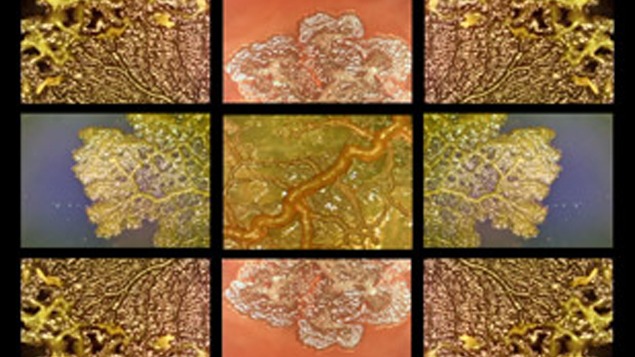Slime mold: you’ve noticed it growing on a fallen tree in the forest, or even possibly growing on old lettuce in your compost pile; but have you really looked at it and appreciated its unique attributes? Artist Gail Wight has lovingly regarded these protists, which typically grow on dead logs or other plant material, feeding on the microorganisms that grow as the plant decays. She has seen the beauty of this simple organism as it takes in energy and reproduces using spores, shifting shapes as it develops. Her process has a great deal in common with scientific inquiry.
To create Hydraphilia (2009), Wight prepared agar slides tinted with non-toxic dyes, added the slime mold, and began videotaping the resulting growth patterns. The video is a microscopic time-lapsed view (30x) of the Physarum Polycephalum or slime mold. Polycephalum is Latin for “many-headed” and Wight’s title for her video installation references a mythological nine-headed monster, the Hydra of Greek myths that grew two heads when one was lopped off. According to the artist, “This video evokes a love for the beauty and occasional grotesqueness of this many-headed creature.”
